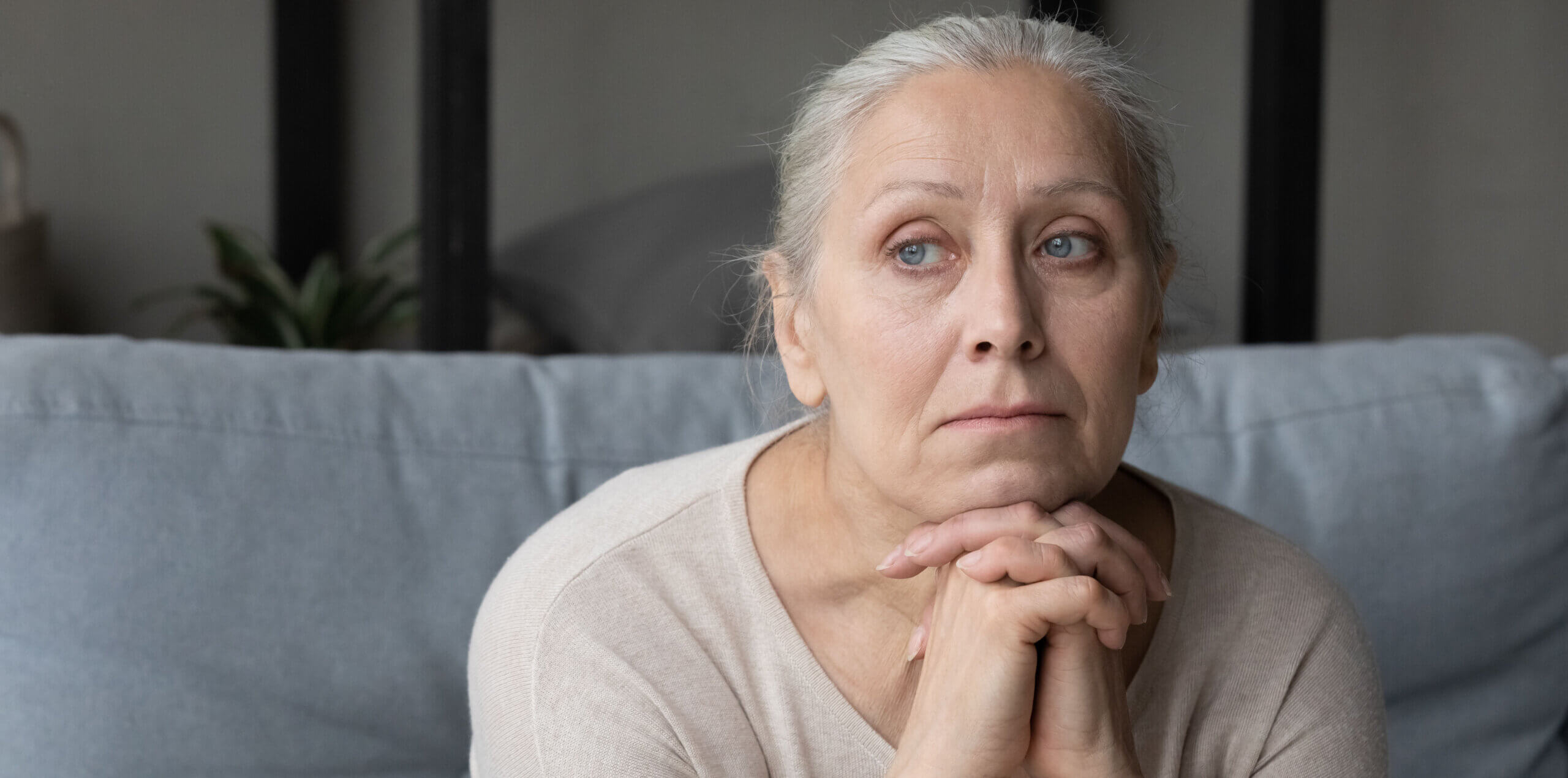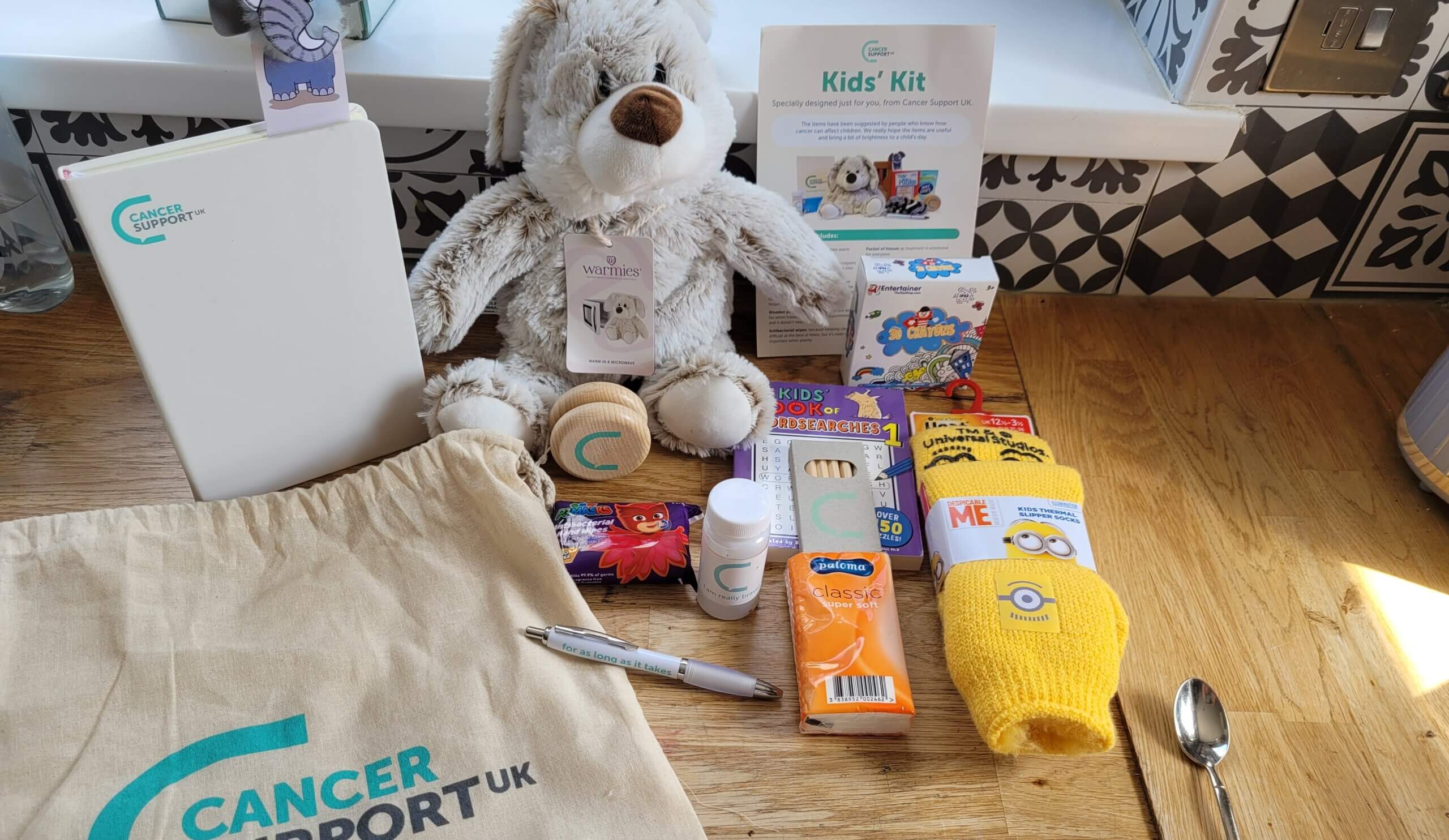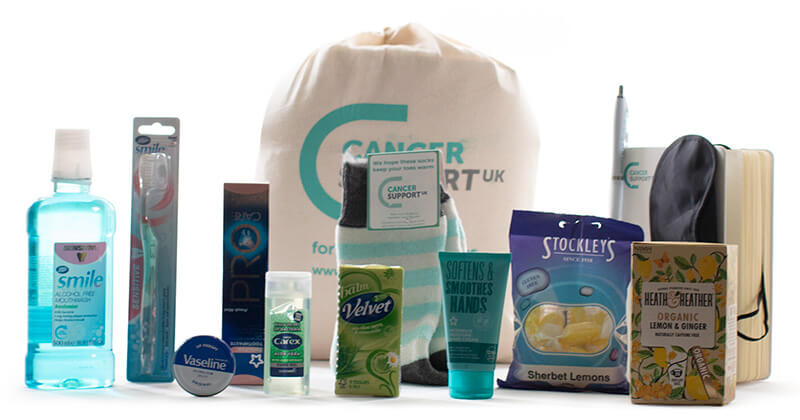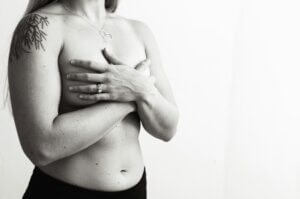
Breast cancer is the most common form of cancer in women, but it’s also the most survivable
Breast cancer: a brief guide
Key breast cancer statistics
According to Cancer Research UK ¹, breast cancer is the most common cancer in women, accounting for almost a third (30%) of all female cancer cases.
While it’s the most common form of cancer in women, it’s also the most survivable.
In fact, survival rates have doubled in the past 50 years thanks to routine screening, diagnostic advances, and improved treatments.
Around three in four women (75.9%) diagnosed with breast cancer in England survive their disease for ten years or more.
But even after successful treatment, breast cancer can leave its mark in other ways.

Breast cancer survival rates have doubled in the past 50 years thanks to routine screening and improved treatments. For emotional support post treatment our free Cancer Coach programme offers peer support and tools and strategies to improve your wellbeing
Recognising the signs and symptoms of breast cancer
Breast cancer can have several symptoms, but the first noticeable symptom is usually a lump or area of thickened breast tissue.
Most breast lumps are not cancerous, but it’s always best to have them checked by a doctor.
You should also see a GP if you notice any of these symptoms:
- a change in the size or shape of one or both breasts
- discharge from either of your nipples, which may be streaked with blood
- a lump or swelling in either of your armpits
- dimpling on the skin of your breasts
- a rash on or around your nipple
- a change in the appearance of your nipple, such as becoming sunken into your breast
Breast pain is not usually a symptom of breast cancer.
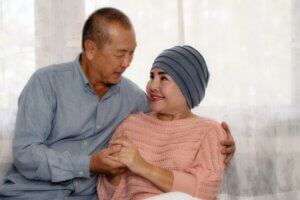
As you age, the risk of getting breast cancer increases
Understanding the risk factors for breast cancer
Causes of breast cancer
The exact causes of breast cancer are not fully understood. However, there are certain factors known to increase the risk of breast cancer.
These include:
- age – the risk increases as you get older
- a family history of breast cancer
- a previous diagnosis of breast cancer
- a previous non-cancerous (benign) breast lump
- being tall, overweight or obese
- drinking alcohol
Breast cancer diagnosis
After examining your breasts, a GP may refer you to a specialist breast cancer clinic for further tests. This might include breast screening (mammography) or taking a small sample of breast tissue to be examined under a microscope (a biopsy).
Understanding the different types of breast cancer
There are several different types of breast cancer, which develop in different parts of the breast.
Breast cancer is often divided into either:
- non-invasive breast cancer (carcinoma in situ) – found in the ducts of the breast (ductal carcinoma in situ, or DCIS) which has not spread into the breast tissue surrounding the ducts. Non-invasive breast cancer is usually found during a mammogram and rarely shows as a breast lump.
- invasive breast cancer – where the cancer cells have spread through the lining of the ducts into the surrounding breast tissue. This is the most common type of breast cancer.
Other, less common types of breast cancer include:
- invasive (and pre-invasive) lobular breast cancer
- inflammatory breast cancer
- Paget’s disease of the breast
It’s possible for breast cancer to spread to other parts of the body, usually through the blood or the axillary lymph nodes. These are small lymphatic glands that filter bacteria and cells from the mammary gland.
If this happens, it’s known as secondary, or metastatic, breast cancer.

The first noticeable symptom of breast cancer is usually a lump or area of thickened breast tissue
Tracking changes in your breast tissue – breast cancer screening
Mammographic screening, where X-ray images of the breast are taken, is the most commonly available way of finding a change in your breast tissue (lesion) at an early stage.
However, you should be aware that a mammogram might fail to detect some breast cancers.
It might also increase your chances of having extra tests and interventions, including surgery, even if you’re not affected by breast cancer.
Women with a higher-than-average risk of developing breast cancer may be offered screening and genetic testing for the condition.
As the risk of breast cancer increases with age, all women who are 50 to 70 years old are invited for breast cancer screening every 3 years.
Women over the age of 70 are also entitled to screening and can arrange an appointment through their GP or local screening unit.
How breast cancer is treated
If cancer is detected at an early stage, it can be treated before it spreads to other parts of the body.
Breast cancer is treated using a combination of:
- surgery
- chemotherapy
- radiotherapy
Surgery is usually the first type of treatment you’ll have, followed by chemotherapy or radiotherapy or, in some cases, hormone or targeted treatments.
While you are here, why not check your emotional wellbeing with our Cancer Compass checker. In just a few seconds discover the practical and emotional support we provide. Click here to find out which area of support might be right for you or someone you know.
The type of surgery and the treatment you have afterwards will depend on the type of breast cancer you have. Your doctor should discuss the best treatment plan with you.
In a small proportion of women, breast cancer is discovered after it’s spread to other parts of the body (metastatic breast cancer).
Secondary cancer, also called advanced or metastatic cancer, is not curable, so the aim of treatment is to relieve symptoms.
Living with breast cancer after breast cancer treatment
Being diagnosed with breast cancer can affect daily life in many ways, depending on what stage it’s at and the treatment you will have.
How people cope with the diagnosis and treatment varies from person to person. There are several forms of support available, if you need it.
- family and friends, who can be a powerful support system
- finding out as much as possible about your condition
- not trying to do too much or overexerting yourself
- making time for yourself
- communicating with other people in the same situation – connecting with support groups like Cancer Coach, therapists, or trusted individuals to share your experiences and receive emotional support
- our Cancer Kits are available free to anyone undergoing treatment – please order one for yourself or for someone you know who has cancer
- Making body image adjustments. Embrace changes in your body with self-compassion and explore ways to enhance your self-esteem
- Mindfulness practices. Engage in mindfulness techniques such as meditation, yoga, or journaling to manage stress and promote emotional well-being.
Acknowledging emotions after breast cancer
You may experience a number of emotions after a breast cancer diagnosis. Treatment can also cause changes in your body, which can affect how you feel in yourself. It is important to remember that everyone reacts differently and that feelings are a natural way of coming to terms with cancer. You may feel some or all of the following feelings:
- Numb
- frightened and uncertain
- confused
- angry and resentful
- guilty
- anxious/worried
- Seeking support. Connecting with support groups like Cancer Coach, therapists, or trusted individuals to share your experiences and receive emotional support
- Making body image adjustments. Embrace changes in your body with self-compassion and explore ways to enhance your self-esteem
- Mindfulness practices. Engage in mindfulness techniques such as meditation, yoga, or journaling to manage stress and promote emotional well-being.
Preventing breast cancer
As the causes of breast cancer are not fully understood, at the moment it’s not possible to know if it can be prevented.
If you have an increased risk of developing the condition, some treatments are available to reduce your risk.
Studies have looked at the link between breast cancer and diet. Although there are no definite conclusions, there are benefits for women who:
- maintain a healthy weight
- exercise regularly
- have a low intake of saturated fat
- do not drink alcohol
It’s been suggested that regular exercise can reduce your risk of breast cancer by almost as much as a third. Regular exercise and a healthy lifestyle can also improve the outlook for people affected by breast cancer.
If you’ve been through the menopause, it’s particularly important that you try to get to, and maintain, a healthy weight.
This is because being overweight or obese causes more oestrogen to be produced, which can increase the risk of breast cancer.
People who have had breast cancer benefit from emotional support after treatment has ended
We provide much-needed emotional support to those living beyond breast cancer
The trauma of receiving a breast cancer diagnosis and treatment can leave long-lasting psychological scars.
Women that have been through it tell us that it changes them, with many sharing that they continue to feel anxious, sad, lonely, and even guilty for being unable to live-up to the expectations of friends and family who assume that getting the ‘all clear’ means a return to life as it was before.
To help those that have had breast cancer understand, live with, and perhaps overcome some of these feelings as they adjust to their ‘new normal’, we developed Cancer Coach.
What is Cancer Coach?
Cancer Coach is our six-week peer support group programme and it’s free to join.
It’s held in small groups, either online or over the phone, and is run by experienced facilitators. Cancer Coach is open to women aged 18 and over who have previously had a primary breast cancer diagnosis and who have completed their physical cancer treatment.
How Cancer Coach helped Samantha after her treatment for breast cancer ended
Cancer Coach provided a lifeline to Sam when she needed it most. When her cancer treatment finished, everyone expected Sam to return to her old self, but inside she felt acutely lonely and an emotional wreck. As the COVID pandemic was still raging, she had to remain indoors, as her immune system was severely weakened, so her isolation was further exacerbated. Cancer Coach’s remote peer support groups made a big difference to Sam – knowing that there were other people who all felt the same way and who had experienced cancer, boosted her emotionally.
¹ Cancer Research UK statistics
